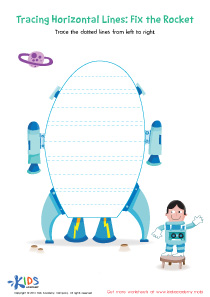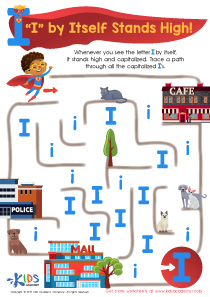Reading proficiency Normal Alphabet Worksheets for Ages 7-9
5 filtered results
-
From - To
Boost your child's reading skills with our specialized Reading Proficiency Normal Alphabet Worksheets for Ages 7-9. Designed to enhance literacy, these engaging worksheets cater to young learners, focusing on foundational reading strategies and alphabet familiarity. Each worksheet offers a variety of fun and educational activities, paving the way for improved comprehension and fluency. Kids can enjoy hands-on practice with consonants, vowels, and word formation while increasing their confidence with the written word. Perfect for both home and classroom use, these resources make reading an enjoyable adventure. Unlock your child's full reading potential today!
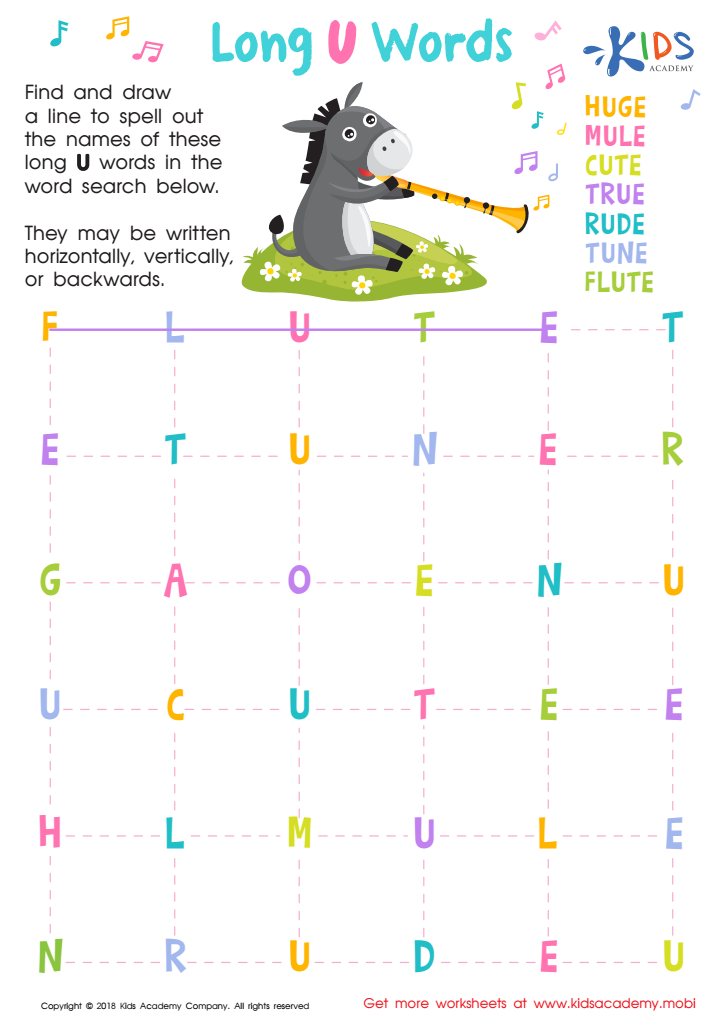

Long /u/ Words Worksheet
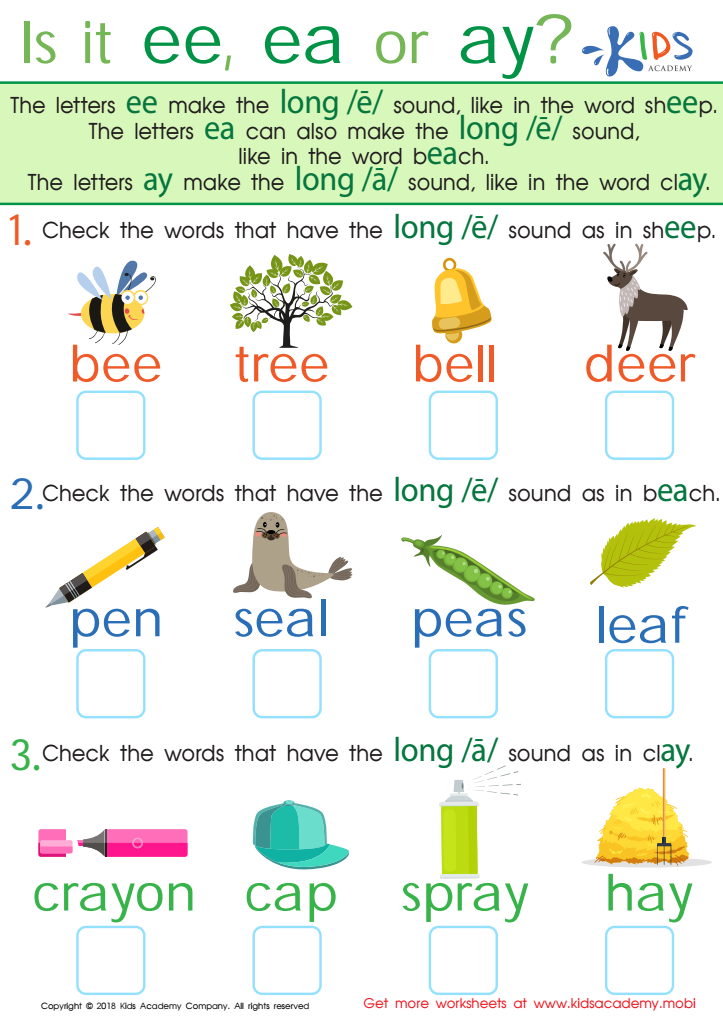

Is It EE, EA, or AY? Worksheet
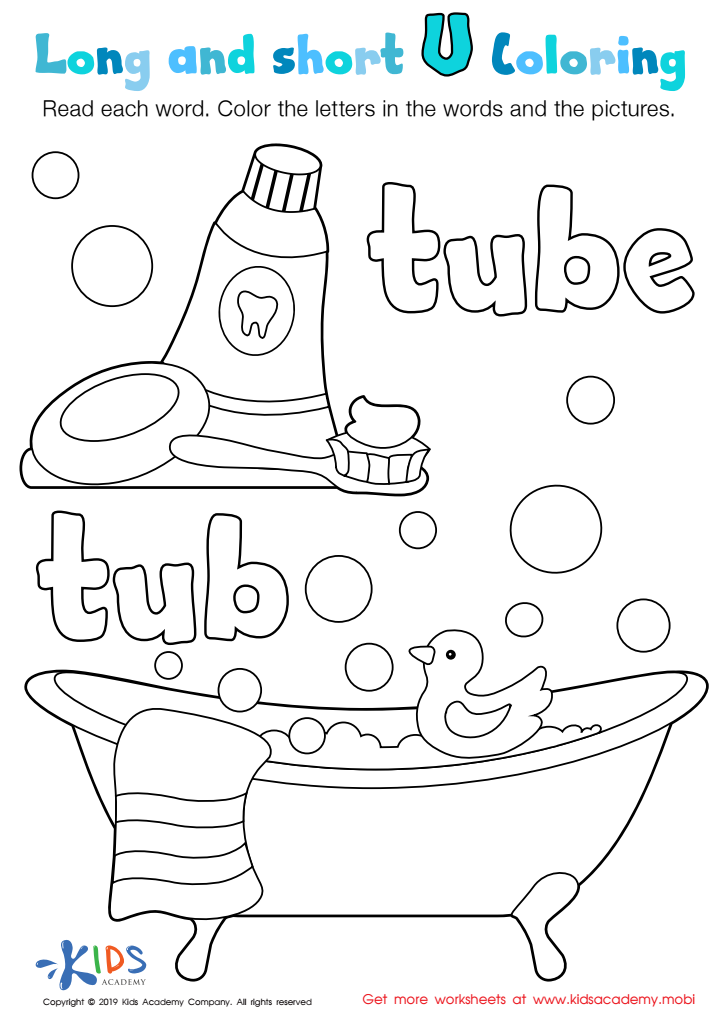

Long and Short U Worksheet
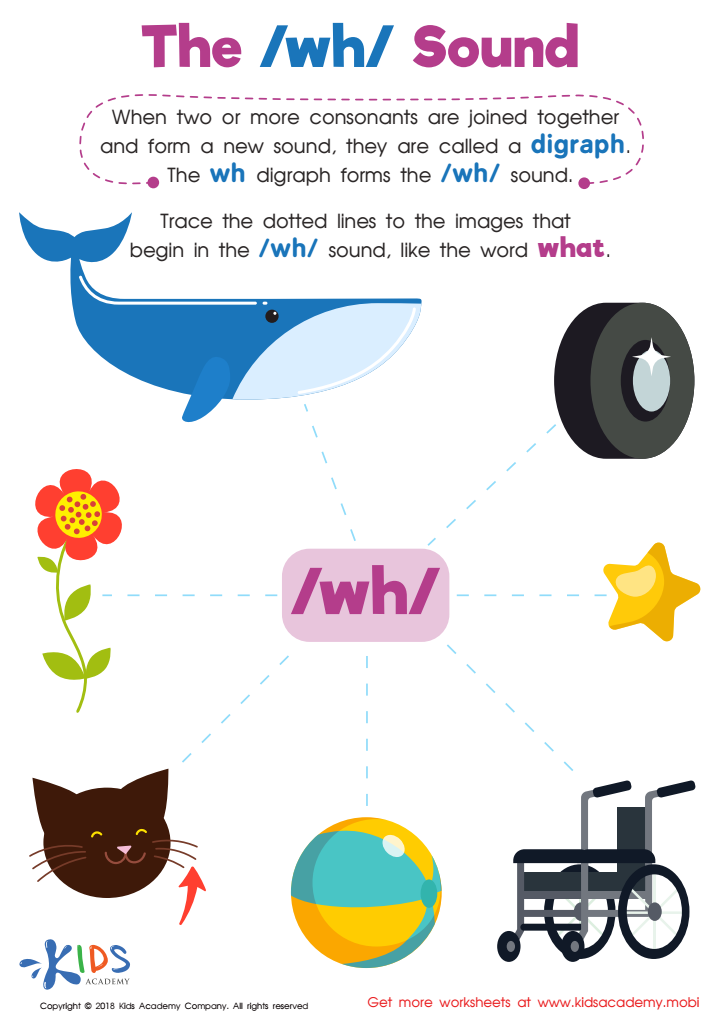

The /wh/ Sound Worksheet
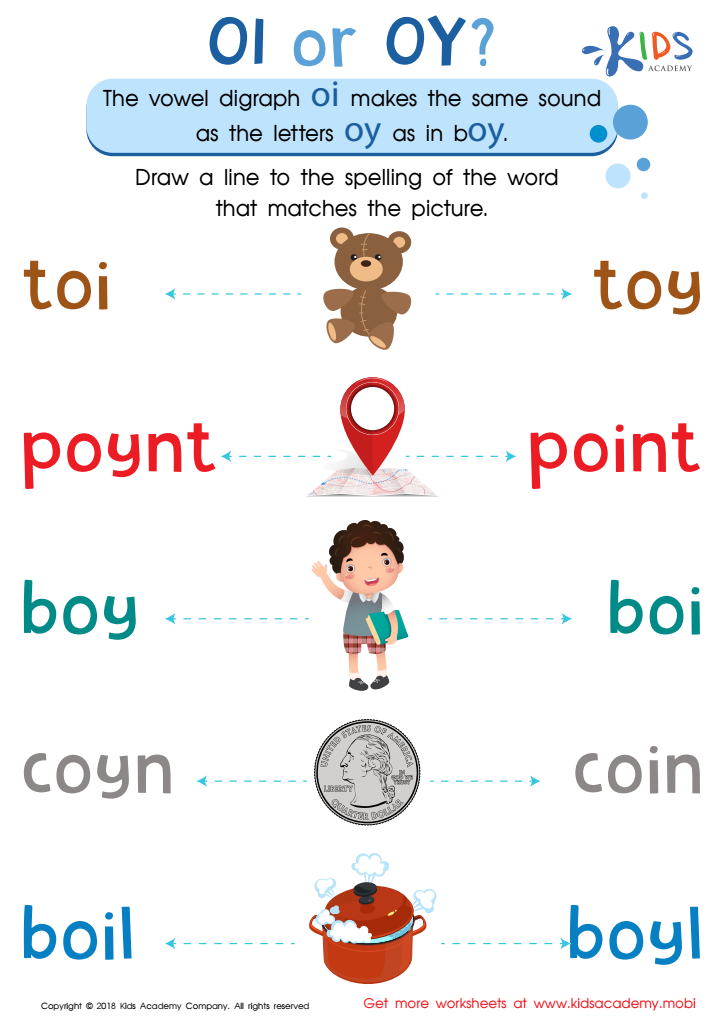

Reading: OI and OY Worksheet
Reading proficiency in young children, especially between the ages of 7-9, is critical as it sets the foundation for future academic success and lifelong learning. At this developmental stage, children transition from learning to read to reading to learn. Proficiency in reading allows them to comprehend and engage with various subjects, enhancing their knowledge base and cognitive skills.
When children read fluently, they can better understand the material, which promotes confidence and motivation in learning. Struggling readers, on the other hand, often face difficulties not only in language arts but across subjects, leading to potential gaps in knowledge and lowered self-esteem. Early proficiency in reading can prevent these challenges.
Furthermore, reading is essential for developing critical thinking and problem-solving skills. As children encounter different characters, plots, and scenarios in books, they learn to empathize and understand different perspectives, which boosts their emotional intelligence.
For parents and teachers, fostering reading proficiency means creating an environment rich in literacy experiences and providing support tailored to each child's needs. This can involve reading together, discussing stories, encouraging library visits, and offering praise for reading efforts. Early investment in reading skills is a powerful way to ensure children are well-equipped for future educational endeavors and personal growth.

 Assign to My Students
Assign to My Students










